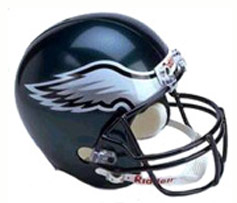 by beaky » Sat Apr 16, 2005 11:13 am
by beaky » Sat Apr 16, 2005 11:13 am
I'm not sure what you mean by flaring on turn from base to final;???, flaring is technically when you pull back a bit just before touchdown. If what you mean by flaring is that you're rolling out of that turn off-centerline, that certainly can be common, esp. with wind.
Here's some things I've learned, with the discalimer that I am not a CFI, and if you're not asking your CFI for some extra help with this stuff, you're wasting your money. The CFI's role here is not to be amazed with your natural gift for flying: he or she is there to teach you. Don't be ashamed to say : "I need more help". And please don't go to your CFI with "but Rottydaddy said..." if any of my advice contradicts what they're telling you. I AM NOT A CFI! If you suspect your CFI is not teaching you properly, ask another CFI for advice.
Anyway, here's my two cents' worth; probably stuff your CFI has already mentioned:
Beefhole is right: EYES OUTSIDE. You need to glance at the instruments to detect trends in airspeed, vertical speed, etc. but you should be looking ouside for landmarks to use as heading reference on each leg of the pattern, as well as looking to see your relationship to the runway. You should also know what relation the horizon should have to the top of the panel or whatever during the various types of turns, etc., so you can keep your eyes outside and still be aware of your attitude.
One nice tip I got once was to practice imprinting the image of each instrument in your mind as you quickly glance at it- sort of a mental HUD. If you relax and focus, you'll be able to "see" that VSI or whatever as you look outside. It's a memory exercise...and remember, you're looking for trends, not specifics. If you're supposed to be going down, and that VSI needle is deflecting up, it doesn't matter how many fpm it says... don't stare at the instruments. Ever.
Back to being too high on final... I went through a phase long after earning my PPSEL when I was consistently turning base too early, and not getting that good sink rate going right away on base.For some reason, I was psyching myself into thinking i was gonna get too low on final, but really if your airspeed is not excessive and the engine's working properly, you won't get yourself into trouble, even if you get a bit below the desired glideslope. The key phrase here is "a bit". I won't contradict your CFI, but he/she should be having you reduce power a little during that turn to base and starting your descent from TPA right away. That's how I learned it, and it's worked fine for me. As for altitude, I was told to just stay above 500 feet AGL on base and I'd be fine. If you're still too high at the top of final, and it's not so bad that you need to go around, chop the throttle and slip. Not with more than 10 degress of flaps, though!!! A good wing-first slip will help you dump some altitude without speeding up. And remember, the goal is to make a good landing, not just any landing, so by all means go around if you aren't happy with how things look at the top of your final leg. Making desperate, hunting approaches and "can't believe I made it" landings won't teach you anything, really. Going around is not a failure- it's a smart move!!! Nothing, and I mean nothing, takes priority over a good, safe landing!!! To overcome this "too high" thing, I did a lot of go-arounds until I got over my mental block.
But yes, timing that turn is critical. Too soon, and you're too high. Too late, and you're dragging it in at a low altitude, adding power to stay aloft when you should be coming in almost at idle. Embarrassing, and sometimes dangerous.
As I mentioned before, pick a landmark, preferably something off to your right (or left, if the pattern goes left). When that landmark comes up, make your move onto base.
As for rolling onto final on-center, you have to be aware of the wind. A decent crosswind will make a big difference, and you have to time your turn to final accordingly. In a no-wind situation, you should turn to final when your touchdown point is about 45 degrees off the nose, and make a normal turn. If your base leg is into the wind, you can either wait a bit longer to turn, or just make a shallower turn. The opposite works the same way if the wind is behind you on base. And again, go around if you're too far off!! You'd be amazed what good it can do...
And above all, don't be discouraged! Just keep trying, and concentrate on what you've been taught and what goal you're after, rather than flogging yourself. A good pilot always thinks of him or herself as a student, no matter how many hours are in the logbook.
Last edited by
beaky on Sat Apr 16, 2005 11:18 am, edited 1 time in total.












 :D I'd been obsessed with how far I could glide, and looked too far for a place, instead of starting my search closer...
:D I'd been obsessed with how far I could glide, and looked too far for a place, instead of starting my search closer...





 (not looking for an onslaught of advice here guys, lol
(not looking for an onslaught of advice here guys, lol  just sayin)
just sayin)
